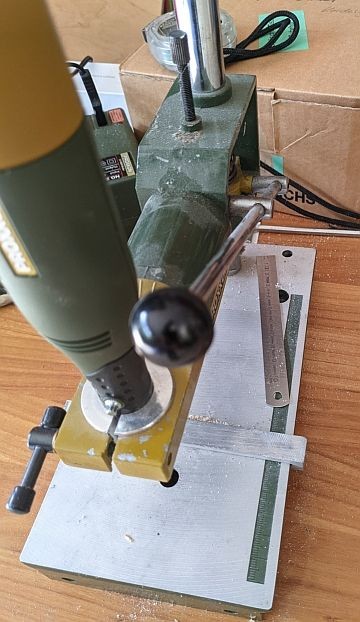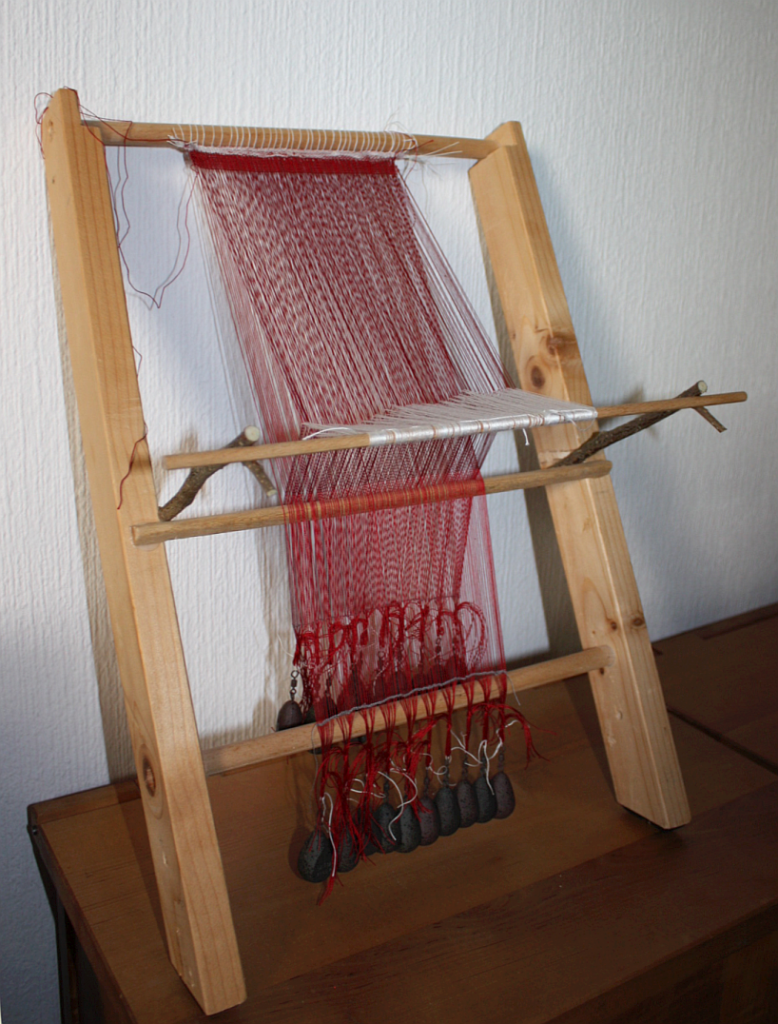Yesterday's blog post fell by the wayside - I was away all day going to set up the loom for the exhibition in Bamberg... and it was great fun. (I also learned a lot! Including a new knot, which is actually a big deal for me, as I seem to be a bit of a knot dyslexic sometimes.)
The loom standing in the exhibition now was the result of a lot of thinking, planning, and the effort of many people. Our idea was to show something about weaving in the era around 1000. Now... that's the time when there's already an inkling of the horizontal loom, but we have next to no good evidence for that (as in "good enough to build a reconstruction from"). So we decided to make a warp-weighted loom.
The original plan was to have a regular one, but the building (which is old) does not allow for a loom to touch the walls. (That's also a possible security issue in an exhibition, as a loom only leaning might fall, and attaching it to the wall was out of the question, as the building itself is under heritage protection). The second plan, having an iron/metal holder for the loom, was out because of budget reasons, so we did end up with a free-standing wooden loom.
It's a proper, nice one, though, not looking as if somebody went collecting a few sticks in the wood and cobbled them together.
(The curious thing is that you can build a functional loom from mostly odd sticks from the woods, provided you make sure that the essential bits that need to be straight are straight. That's harder to do nowadays, though, than making one from cured, available, straight bits of wood, though. So that's what we have.)
The main thing that we wanted to do with the loom was to show that textile production at that time was a high-standing, important, and highly developed part of production, and the resulting objects were of high quality. So we found an expert in warp-weighted loom weaving in Sweden - Marie Wallenberg - who worked together with us to get the idea across to the woodworker, who made an almost perfect loom. One of the folks from Kaptorga made the loomweights (scaled down a little to be lighter, because that helps to not wear out the threads over time - the normal fitted loom is not intended to stay for months or years with the loomweights hanging), and Marie wove a fabric to fill the loom.
If you've seen warp-weighted looms in exhibitions, they are often a crooked thing, with a crooked bit of coarse weaving on them. While that may have happened occasionally, it is not what we would expect them to be in general - after all, they were used to make fine, straight, high-quality fabrics in the past. And that is exactly what we wanted to portray.
So once the loom had arrived from the woodworker and the fabric had arrived from Sweden and I had finished making the Rod of Many Holes to attach the weave to the loom's top beam, I set out to set things up in Bamberg, with Marie coaching me through the process.
And now we have a "little clay army" (my new favourite expression for clay weights hanging on the loom) and a white wool waterfall, showing off nicely that yes, you can weave a fine 2/2 twill on a warp-weighted loom. I really love the beautiful starting border as well!
The exhibition will be open from October 25, and even though the info page is German only, the exhibition itself and the catalogue are fully bilingual German and English.









